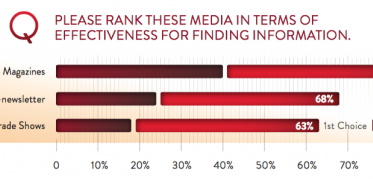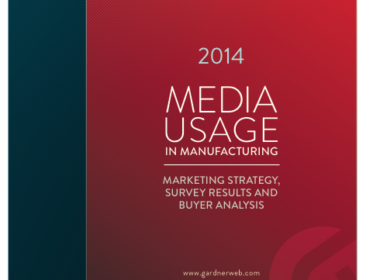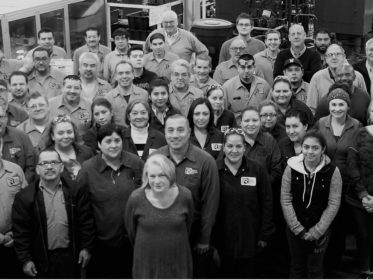The art and skill of public relations have definitely changed in the last 10 years. In this interview, we talk to Michelle Garrett, a PR expert who works with manufacturing companies. She shares what works and what doesn’t, as well as a few easy strategies you can use to start a PR program for your company.
Pre-Internet, if you worked for a Fortune 500 manufacturing company, you could regularly send out press releases and they’d get picked up by the plethora of trade publications that existed, as well as local media. What has changed – and why?
Garrett: The biggest change is that editors and reporters will no longer talk to you if they don’t have to. For example, I used to pitch story ideas to trade publication editors to get interviews for my clients. This resulted in good dialogues.
Now, I carefully craft press releases that tell the complete story and include a quote from the client. I also include a high-quality photograph and/or video.
The goal these days is to make it super easy for an editor or reporter to do a story using the press release versus trying to get them to interview your client for a story they have to craft from scratch.
Do contributed articles still work?

Garrett: Yes, I think these can be very effective, as staffs continue to shrink at publications. The key here is to pitch your idea before you write the piece. In some cases, the client will have me ghostwrite the article.
So it sounds like the traditional press release is still very much alive. Do you agree?
Garrett: Yes! Reporters still ask for them. But, they have to be strategically and carefully written. I still follow the inverted pyramid (where you put the important information at the beginning of the release). They still need to be objectively written as well.
Subjective material goes in a quote from the customer or company executive. Including a testimonial from a customer’s customer is also very good.
If the customer doesn’t want to be quoted in the press release, perhaps due to legal constraints, you can let the editor or reporter know the person is available to talk.
I would also add, if you’re doing a PR campaign and have a time-sensitive event, build in time for the press release to make multiple rounds through legal and other departments.
When experts like you refer to “public relations,” what does it mean in light of the changes that have taken place?
Garrett: This is a good question. One of the main functions of PR back in the day was sending out press releases and having press conferences – such as at tradeshows or other events. Until COVID hit, meeting with journalists at a tradeshow to announce a new product was still important.
Now, it’s all about targeting the right vertical publications and building relationships with editors. Instead of one large list of publications, the targeted list is very tight and small. You’re not pitching the Wall Street Journal, unless the fit is very apparent.
Do you need to advertise with a trade publication to get press?
Garrett: No, definitely not! A wall still exists between editorial and advertising. Most editors are quite friendly; it’s easy to get in front of them through email. However, I will add that if I’m having trouble reaching an editor, and the client does advertise, I’ll ask someone in advertising for help with getting the editor’s attention.
What is meant by “earned media”?
Garrett: Another good question. You actually have three types of media: paid, owned, and earned.
Paid media is advertising or sponsored content. A print or digital publication will indicate if content is “sponsored” – meaning, a company paid for placement.
Owned media is the library of content a company owns – its website, blog, video, and knowledge base.
Earned media is what is gained through media relations or PR. You have to earn the media coverage but not pay for it. You can do this yourself or hire a PR person to help you.
This interview is a good example of earned media. You asked to interview me!
What are some of the strategies smaller manufacturers can use to get this earned media?
Garrett: Your first step is to consider which media outlets – websites or publications – your prospects are looking at when making purchasing decisions. Also, consider influencers in your space – who they’re listening to and sharing.
The second step is to make a list of potential outlets and any influencers you should be targeting.
Then, begin reading the publications. Your goal is to learn what each publication covers and who the reporters are so that you can craft your pitches.
For example, this magazine, Manufacturing Marketing, covers marketing topics versus machining, lean, additive, process improvements, etc. If I were to pitch one of my clients to you, I’d need to have a good manufacturing marketing case study.
The last step is to brainstorm topics that the readers of the publication would find interesting. Every publication has a focus or “beat.” You want newsworthy items – for example, trends in AI and vision systems. Then, determine which publication or reporter covers this topic.
Because it’s difficult to see your own company from a newsworthy perspective, it helps to hire a PR consultant who understands the industry you’re in and is keeping abreast of the larger trends and topics publications are covering.
Do’s and Don’ts for Starting a PR Campaign
According to Michelle Garrett, people don’t understand what PR is, become overwhelmed, and then give up. Here are her tips for starting from scratch and building small wins.
- DO: Hire a PR pro. This person should have demonstrated experience in manufacturing.
- DO: Give your website a thorough review and make needed updates. It’s the first thing editors will view – as well as the people reading about you as your company begins garnering earned media.
- DO: Start with getting your message out on LinkedIn or Facebook. Set aside an hour or two each week to connect with people in your space and share or like posts.
- DO: Be consistent. You can’t do one press release or a few social media posts and then give up.
- DON’T: Hire someone based on big promises or bargain-basement rates. Manufacturing is its own niche and requires a person with knowledge and experience.
- DON’T: Expect big wins right away – e.g. your company on the cover of a magazine.
- DON’T: Try and manage more than 1-2 social media platforms. What typically happens is you get burned out and then you have dead accounts (which looks really bad).
- DON’T: Give up! PR is a long-term activity. The more you consistently work it, the more you’ll see results.
Michelle, thank you! Your LinkedIn feed and website are testaments to the fact you practice what you preach.
For manufacturers who would like to learn more about Michelle and her services, you can view her website at michellegarrett.com.




